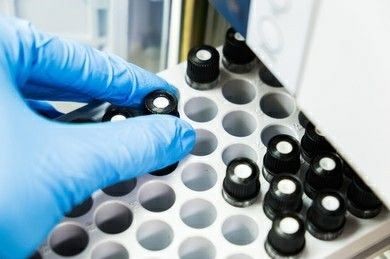Qualitative and Quantitative Analysis of Metabolite Groups in Herbal Medicines
Inquiry
The characterization and quantification of active ingredients and their metabolites in herbal medicines is challenging, not only because of the complex composition of the herbs themselves but also because of the introduction of biological substrates and the wealth of metabolites that result from the interaction of complex herbal systems with the human body. Lifeasible can provide qualitative and quantitative analysis of herbal metabolite groups by combining standard controls, mass spectrometry, and NMR analysis database screening.

Qualitative strategies
Advanced mass spectrometry techniques can provide a wealth of mass spectral information that we can incorporate with background deduction techniques to deduct background noise to reduce the interference of components of the matrix with the analytes to be measured. Using background subtraction techniques, we can identify trace or trace substances submerged in the background signal. For the identified unknown components, the molecular formula is determined and the structure of the compound is inferred based on fragmentation information, accurate mass number information, and fragmentation information, combined with the laws of mass spectrometry cleavage and advanced data processing methods such as mass loss filtering, daughter ion filtering, neutral loss filtering, and isotopic distribution filtering.
We classify the prototype drugs of herbal medicines and their metabolites in vivo according to their parent nucleus structure. Compounds with the same parent nucleus structure can be grouped into one type, and compounds of the same type will have similar fragment ion and mass spectral cleavage patterns. The software summarises the characteristic fragment ion and mass spectrometry cleavage patterns of different classes of compounds to build a database, including a diagnostic fragment-ion-based extension strategy. In addition, we have established a system and platform for the efficient separation and accurate identification of chemical components of herbal medicines using multidimensional/multi-column chromatography-mass spectrometry coupled with multiple scanning modes, online energy-resolved mass spectrometry (online ER-MS), direct injection (DI) analysis - proposed targeted metabolomics.
The herbal database can greatly improve the research process of the identification of herbal medicines and their metabolites. We can provide you with integrated services including information on the structure, metabolism, and target toxicity of components in herbal medicines, herbal mono-formulas, and herbal compounding in combination with the database of herbal chemical components.
Quantification strategies
A pharmacogenetic indicator component may be one or several active components with defined efficacy, known structure, or metabolites in vivo, and which are associated with efficacy or/and safety.
 Figure 1. Methods for the selection of pharmacokinetic indicator components.
Figure 1. Methods for the selection of pharmacokinetic indicator components.
Once the indicator components have been identified, we can use liquid mass spectrometry to perform the assay, by establishing the analytical method, validating the method, and then applying it to the actual sample analysis. For known or hypothetical information, the data is targeted through the different scan modes of mass spectrometry. The scan modes of mass spectrometry include single ion monitoring (SIM), selective reaction monitoring (SRM), multi-reaction monitoring (MRM), parent ion scanning, and neutral loss scans. MRM is an important technique for the quantification of targets in complex mixtures and is the gold standard for mass spectrometry quantification. Scheduled MRM (sMRM) mode can solve the problem of too fine peaks and not enough scanning points and can achieve accurate MRM detection of a large number of compounds. We can provide you with multi-component (5 or more) analysis of herbal extracts based on HPLC-MS/MS, UPLC (UHPLC)-MS/MS, and UFLC-MS/MS techniques, covering one or more classes of herbal active ingredients such as flavonoids, alkaloids, terpenoids, saponins and phenolic acids in herbal extracts.
The active forms of herbs that enter the body to exert their therapeutic effects may be a prerequisite for understanding their in vivo processes if they can be characterized and quantified. Lifeasible has therefore developed techniques for the analysis of biological samples in complex systems to enable the isolation and analysis of the substances to be tested. Please feel free to contact us for research on herbal metabolite groups.
For research or industrial raw materials, not for personal medical use!
Related Services


 Figure 1. Methods for the selection of pharmacokinetic indicator components.
Figure 1. Methods for the selection of pharmacokinetic indicator components.